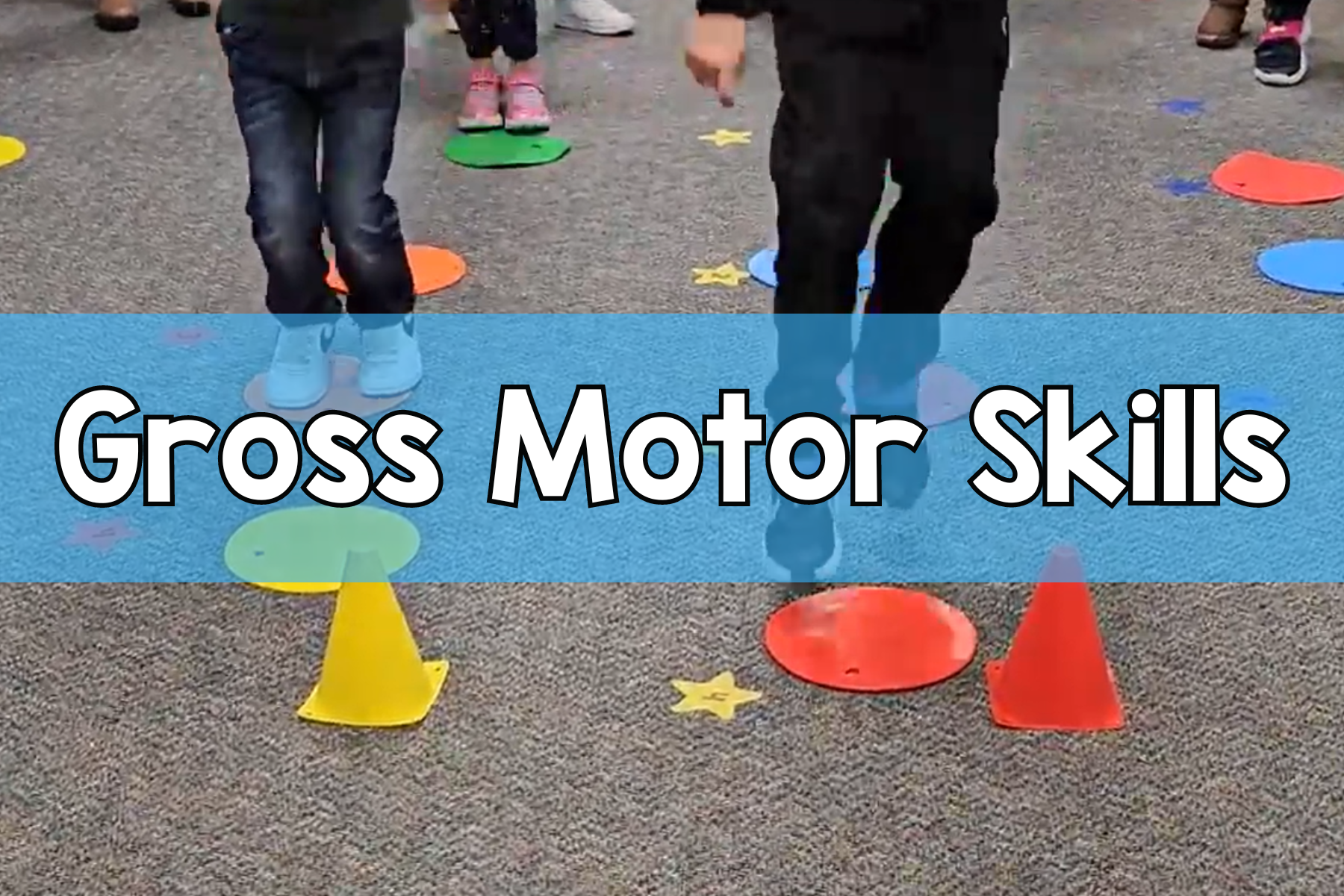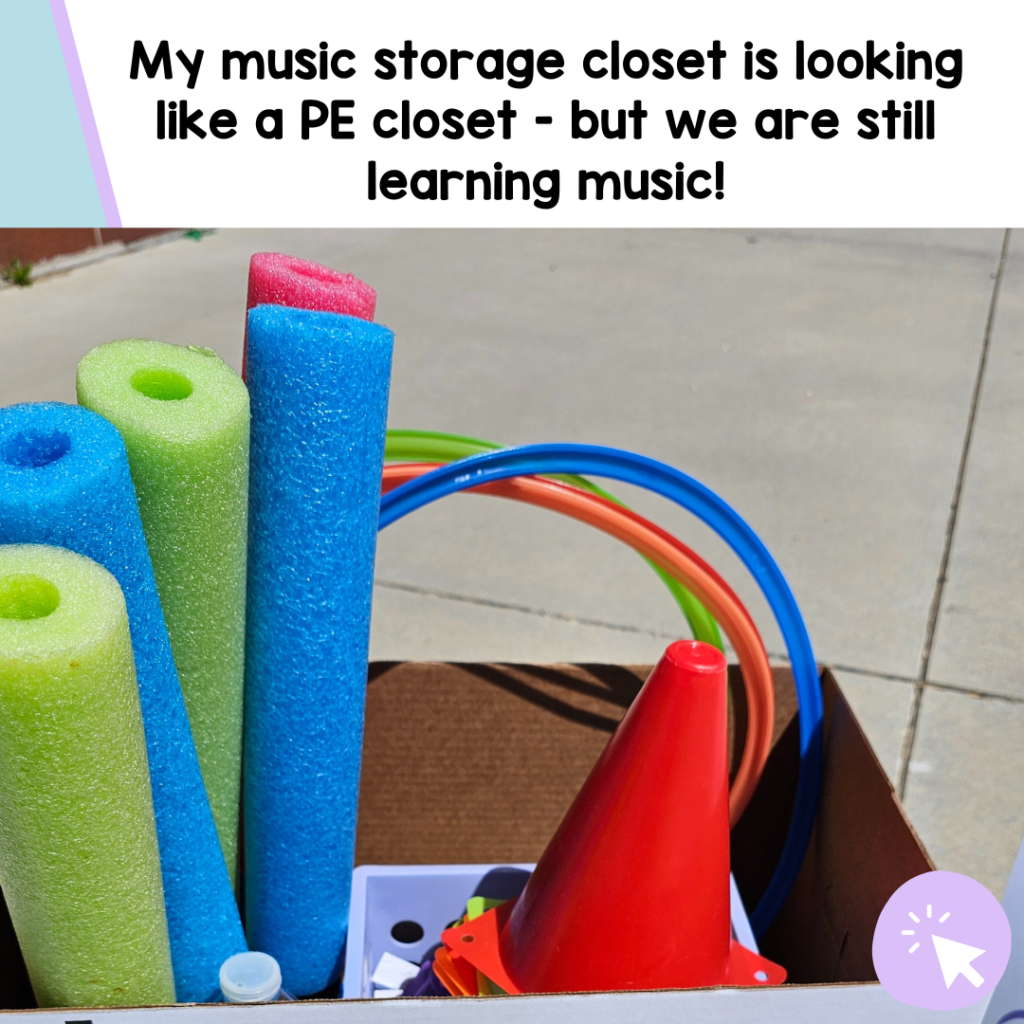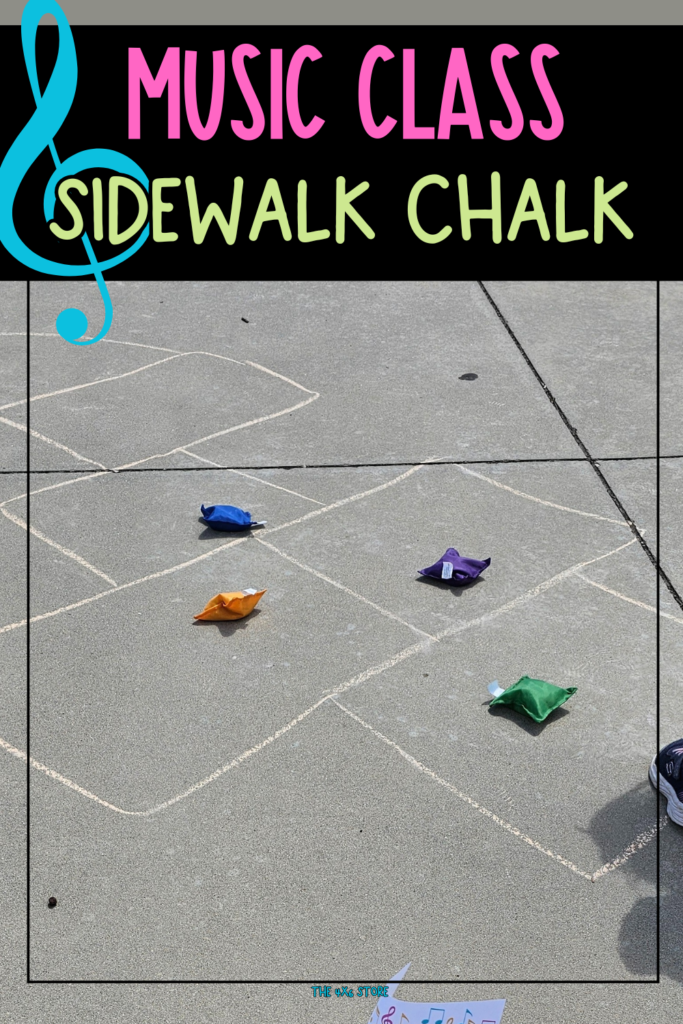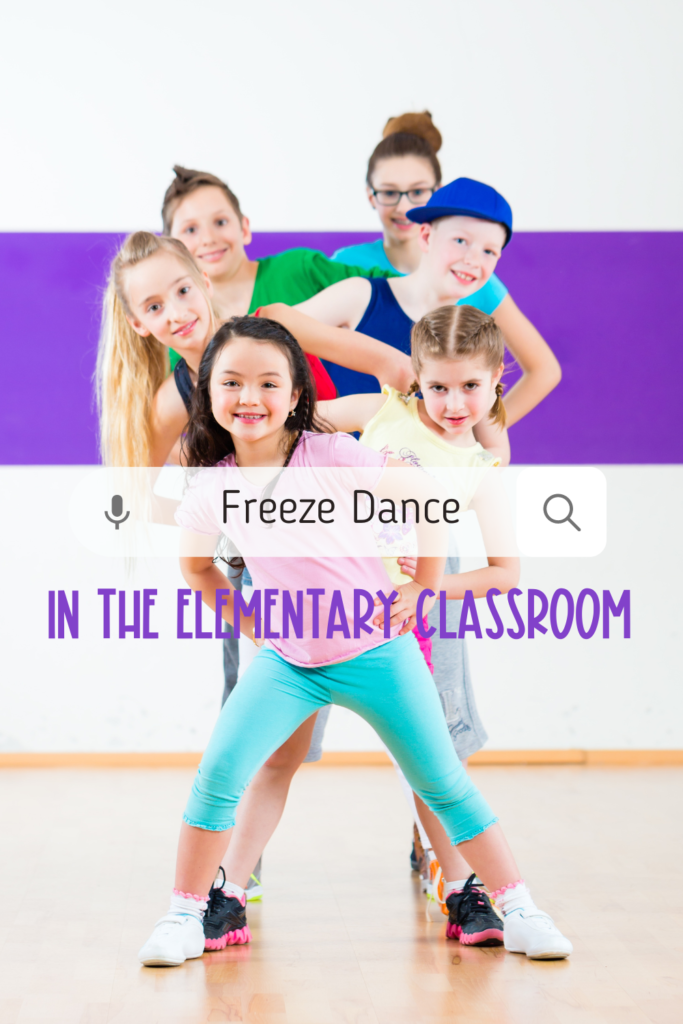3 Benefits of Developing Gross Motor Skills for Kids
I thought the kids were rhythm champs.
My kindergarten students had learned to clap, snap, and vocalize a rotation of different rhythms – and had progressed surprisingly fast too! So for a bit of movement fun, I made them practice the rhythms by jumping onto a series of small poly spots.
This should be easy, I thought. These kids jump around all the time, I thought. Their gross motor skills must be refined enough to do this. And, they’ve got the rhythms down pat, so they should be able to hop to those same rhythms without much effort.
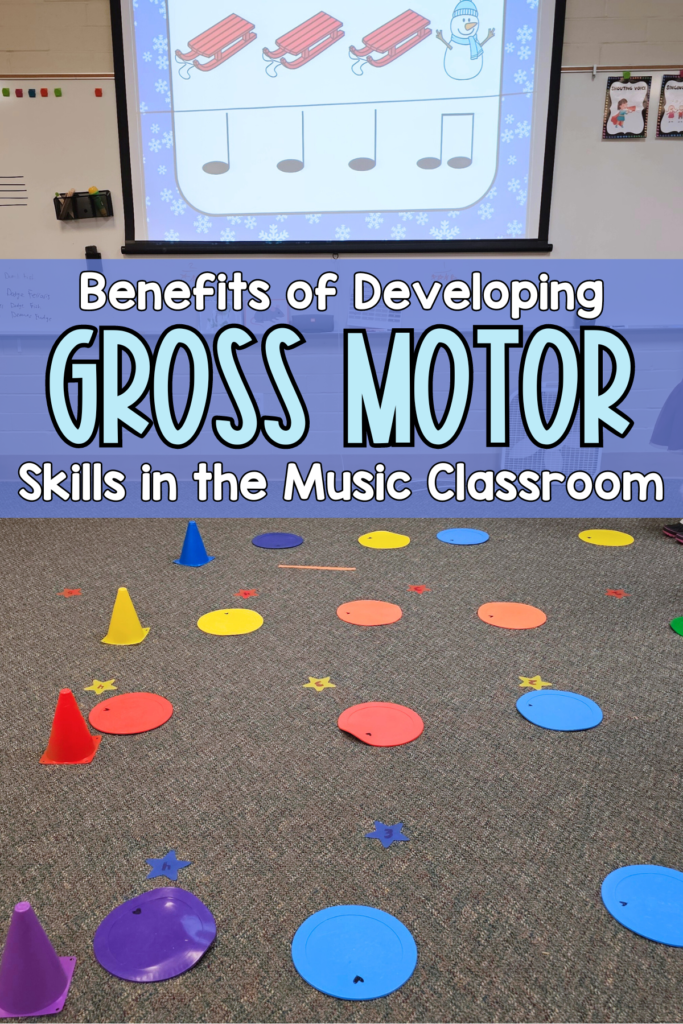
Table of Contents
- Boy, Was I Wrong
- What Are Gross Motor Skills?
- Why are Gross Motor Skills Getting Worse?
- 3 Benefits of Developing Gross Motor Skills
- Resource Roundup: videos, resources, and more!
As an Amazon Associate, I earn from qualifying purchases at no extra cost to you! This post contains links to affiliate products that I use to support student learning my music classroom.
Boy, was I wrong.
Expecting to see a steady stream of “hop, hop, hop, double-hop” as I played my steady beat drum, I instead had indiscernible chaos! Even my best steady beat students were jumping like hot kernels of popcorn – unpredictable and certainly NOT to a beat!

I took my experience to a community of music educators and I discovered I wasn’t alone. Many teachers were noticing how incoming AND current kindergarten students are more and more behind in gross motor, full body coordination skills.
I don’t know why kids are popping all over the place like this. I’m sure those who research child psychology will figure it out 10 years from now. (I’ll share a few guesses later…)
It doesn’t matter, though. All I know is that I wanted to figure out how I could help my little students move forward NOW. Call me crazy, but because of the chaotic experience, I was determined to support these littles in developing their gross motor skills and full-body coordination.
And the best way I know how? Through music class!
But before we get to that…
What Are Gross Motor Skills?
Simply put, motor skills involve the nervous system and its ability to control bodily movements.
There are 2 kinds of motor skills: fine motor and gross motor.
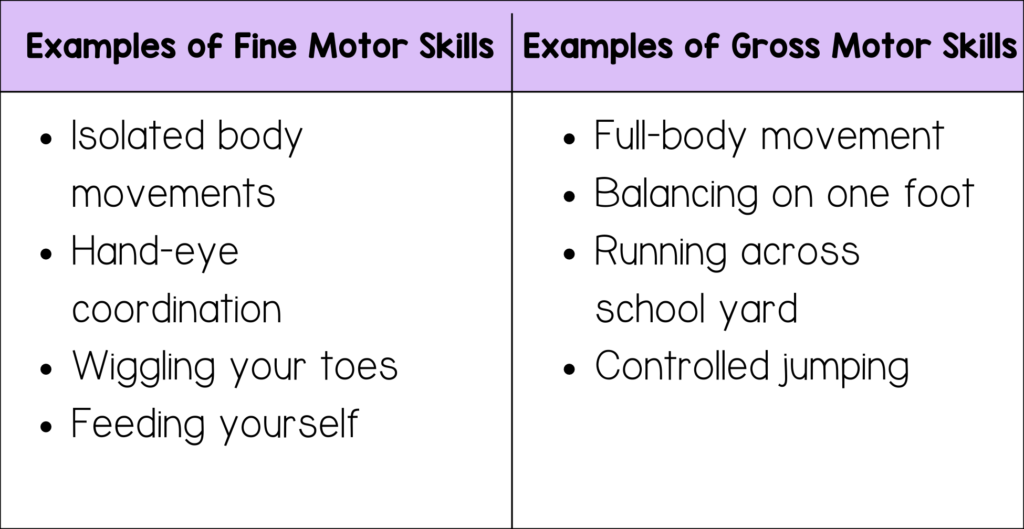
Like a toddler going from walking to running to controlled jumping before they can properly hold a pencil, it’s no surprise that fine motor skills almost always tend to develop later than gross motor skills.
So you can imagine why it was so concerning to me that my kinders were able to clap complex rhythms like champions… but were unable to jump with their full bodies to those same rhythms. Their fine motor skills were honed, and yet their gross motor skills seemed to lag behind.
A Chat with a PE Teacher
I took my concerns to a gross motor specialist – AKA the PE teacher. It was a great conversation about learning how gross motor skills develop in our youngest students. I learned that motor planning skills required building on foundational skills one at a time – just like we learn music. Duh. 🤦♀️
You will have to check out more on that conversation and how I am working on gross motor skills in my music classroom in this blog post.
But it still had me thinking…
Why are Gross Motor Skills Getting Worse?
I’m just guessing, but hear me out.
iPads, TVs, video games – kids are much more sedentary now than ever before. Sit them in front of a screen, and the adults get hours of peace and quiet. Screen time is always on my mind – but that’s a whole different train of thought to follow!
Supervised dangerous play? Forget it. Parents are helicopters these days, so climbing trees carefully (hello full-body coordination practice!) is out of the question.

With less opportunity for unstructured physical play, children aren’t exploring their environment with their full bodies in the same way anymore. I would dare guess that this has not impacted their fine motor skills, because they can hone those even while sitting down and playing video games.
But I do have a hunch that our society’s free-play deficit and sedentary lifestyle has impacted student gross motor skills.
Why does this matter so much though? Aren’t most of us sitting in front of computers working all day anyway?
3 Benefits of Developing Gross Motor Skills
So do gross motor skills matter so much? What are the benefits of strong gross motor skills?
Here are 3 of them!
1. Improved Cardiorespiratory Fitness
We want our kids to live long, healthy lives, don’t we? Heart health is the key to that. According to the American Heart Association, just under 50% of all people in the US have some type of heart disease.
That’s super scary.
Our kids deserve to have a chance at developing healthy, physical habits early. So when kids are moving around as part of their regular routine, they’re more likely to exercise.
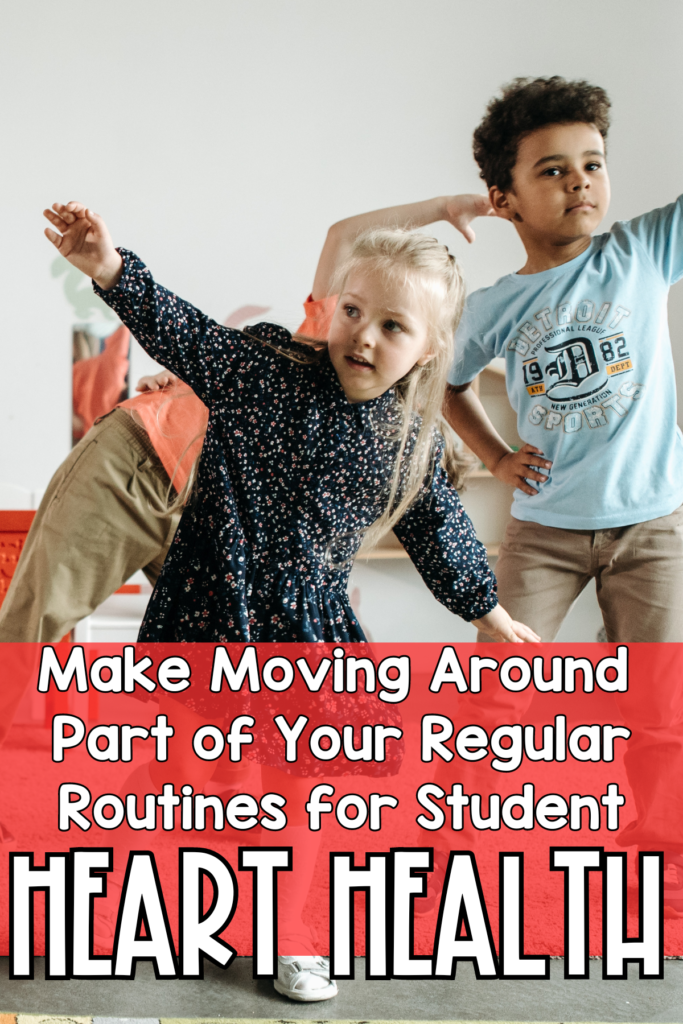
And it starts way before kindergarten.
We can help them feel confident in their body by giving them opportunities to develop their full-body coordinated movements. If you’re a music teacher like me, here’s a YouTube playlist of mine that I use to help my students build full-body rhythm. Activities that require moving different parts of the bodies in different ways and heights enhances brain function and is a great stepping stone to increased gross motor skills.
2. Increased Cognitive, Social, and Language Development
Our kids’ brains are literally exploding with rich synaptic connections between the ages of 0-5. It’s the most critical time.
When our toddlers run as fast as they can or jump to the beat of the drum, they are breathing life into their brains through their gross motor movements. Their little neurons are stretching, connecting, and forming pathways for them to make it easier for them to learn.
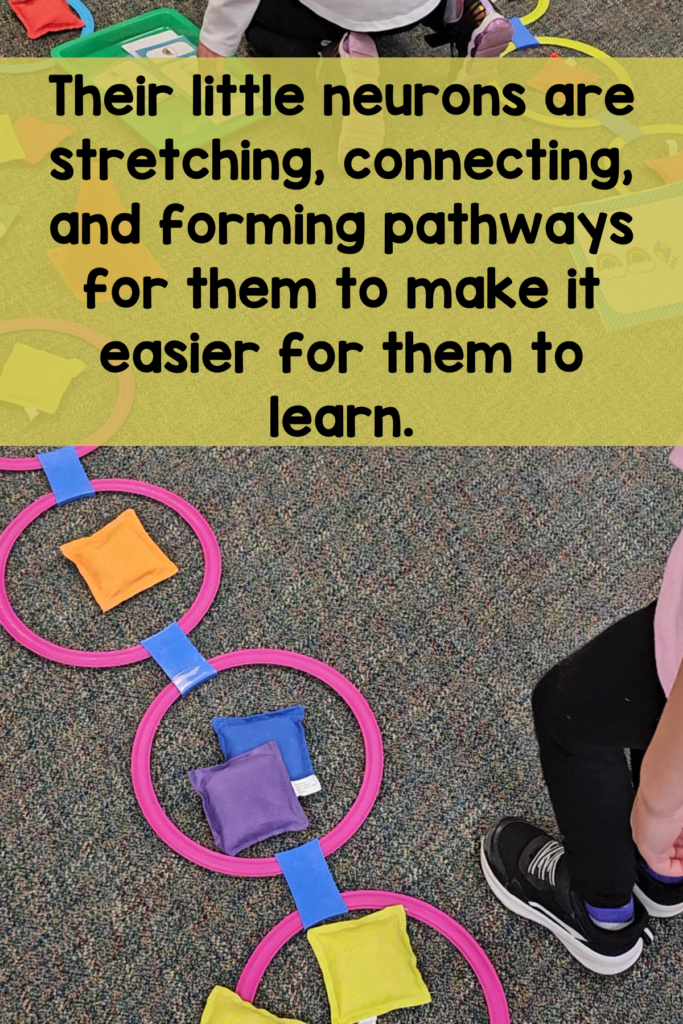
Besides, games that involve physical movement are the perfect way to get kids playing together. Once you have that, then the opportunities for social interaction and language development skyrockets.
This, too, starts way before kindergarten.

3. Improved Mental Wellness: Lower Anxiety and Higher Self-Esteem
You know those feel-good dopamine hits we get after going to the gym? Pure joy!
- You slogged through the workout – self-esteem check!
- You’ve got happy hormones coursing through your body – Zen feeling check!
- You kept your mind focused on each rep and goal – mindfulness check!
Why WOULDN’T we want that same improved mental wellness for our kids?
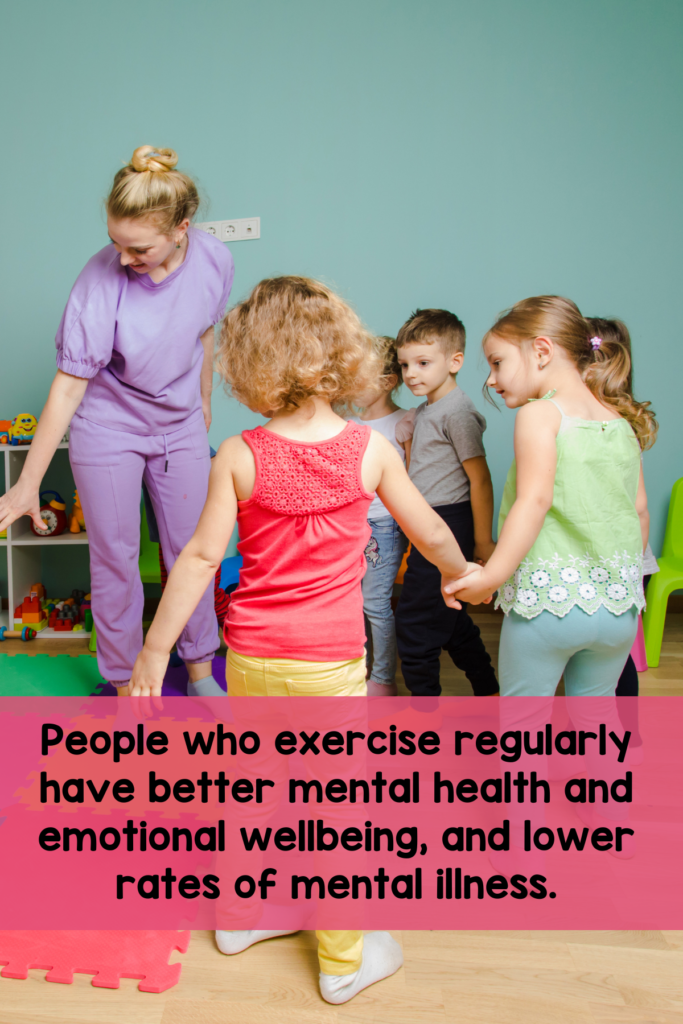
All the recent scientific literature indicates that exercise and mobility correlate with mental well-being, including the National Institute of Health. People who exercise regularly have better mental health and emotional wellbeing, and lower rates of mental illness.
The more you move – and enjoy movement – the better your mood and outlook!
Instead of occupying our littles with screen time to get them out of our hair, get them zooming around on a tricycle. Throw them in an enclosed tennis court if you have to so you can get a break without worrying about having to chase them.
Just get them moving.
We all deserve that slice of happiness that comes with well-oiled gross motor skills.

Resource Roundup: Videos, Resources, and more!
Sold on getting our students moving, but need a bit of a boost to get started?
You’ve come to the right place!
As a music teacher, I’m all about making movement fun with music. Here are some YouTube videos I’ve put together to get kids excited about jumping around! (Yes, it’s not lost on me this is screen time – but I am definitely not anti-screens!)
Body Percussion is a great way to get students working their brains to control different regions of the body. Moving from a pat to a clap requires motor planning of the hands. Stomping and snapping in succession gets the cerebellum to fine-tune top vs bottom of the body coordination.
Freeze Dancing is a great way for students to work on whole body movement, too! They have to plan their movements around not knocking into their classmates! 🙂
Are you a music teacher too and want to pair this with music theory? Here is a resource that go with these videos!
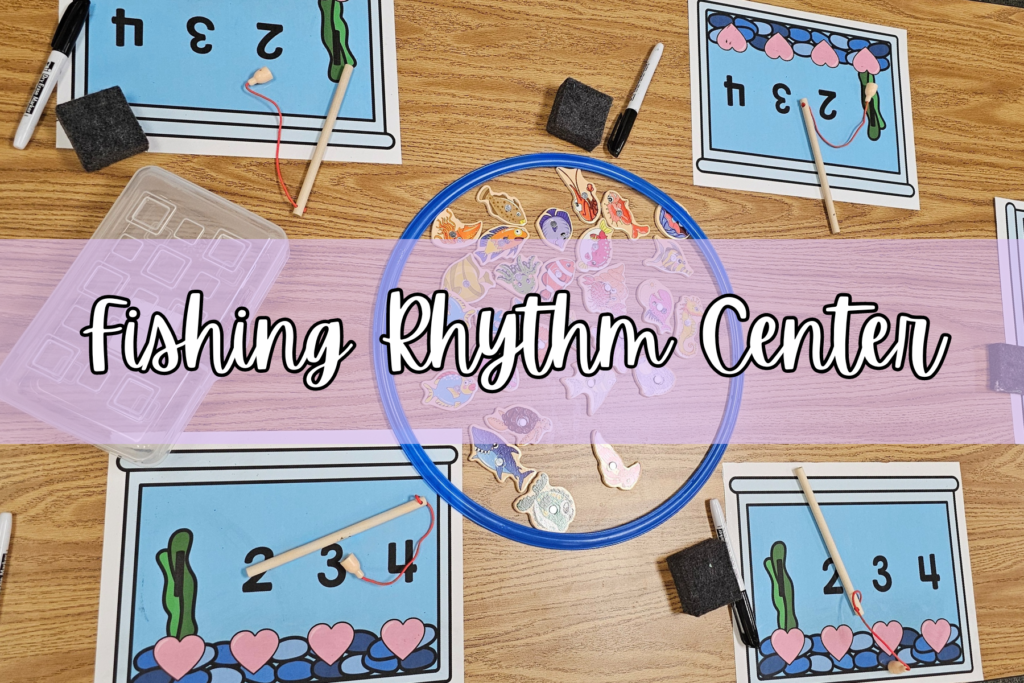
I believe in getting kids moving – so here are two FREE Google Slides documents with my YouTube videos embedded for your easy viewing!
If you’re curious about how I incorporate gross motor skill development into my music classes, hop over to this blog post for 7 of my favorite strategies!
I hope you find these resources useful! Reach out anytime – especially if you have questions, or other ideas to share. I read every email 🙂
Until next time!
You May Also Enjoy…
Sources
Aditya Mahindru, et al. “Role of Physical Activity on Mental Health and Well-Being: A Review.” Cureus, Cureus, Inc., Jan. 2023, https://doi.org/10.7759/cureus.33475. Accessed 8 Aug. 2024.
“More than Half of U.S. Adults Don’t Know Heart Disease Is Leading Cause of Death, despite 100-Year Reign.” American Heart Association, 2024, newsroom.heart.org/news/more-than-half-of-u-s-adults-dont-know-heart-disease-is-leading-cause-of-death-despite-100-year-reign#:~:text=Wu%20cautioned%20that%20this%20lack,most%20notably%2C%20high%20blood%20pressure. Accessed 8 Aug. 2024.
Panggung Sutapa, et al. “Improving Motor Skills in Early Childhood through Goal-Oriented Play Activity.” Children (Basel), vol. 8, no. 11, Multidisciplinary Digital Publishing Institute, Nov. 2021, pp. 994–94, https://doi.org/10.3390/children8110994. Accessed 5 Mar. 2024.
Piek, Jan P., et al. “The Relationship between Fine and Gross Motor Ability, Self-Perceptions and Self-Worth in Children and Adolescents.” Human Movement Science, vol. 25, no. 1, Elsevier BV, Feb. 2006, pp. 65–75, https://doi.org/10.1016/j.humov.2005.10.011. Accessed 5 Mar. 2024.
Oliveira, Carlos, et al. “Associations between Gross Motor Coordination and Academic Achievement in Elementary School Children.” Human Movement Science, vol. 32, no. 1, Elsevier BV, Feb. 2013, pp. 9–20, https://doi.org/10.1016/j.humov.2012.05.005. Accessed 5 Mar. 2024.
Skinner, Rosemary A., and Jan P. Piek. “Psychosocial Implications of Poor Motor Coordination in Children and Adolescents.” Human Movement Science, vol. 20, no. 1-2, Elsevier BV, Mar. 2001, pp. 73–94, https://doi.org/10.1016/s0167-9457(01)00029-x. Accessed 5 Mar. 2024.
Okely, Anthony D., et al. “Relationship of Cardiorespiratory Endurance to Fundamental Movement Skill Proficiency among Adolescents.” Pediatric Exercise Science, vol. 13, no. 4, Human Kinetics, Nov. 2001, pp. 380–91, https://doi.org/10.1123/pes.13.4.380. Accessed 5 Mar. 2024.
Leonard, Hayley C., and Elisabeth L. Hill. “Review: The Impact of Motor Development on Typical and Atypical Social Cognition and Language: A Systematic Review.” Child and Adolescent Mental Health, vol. 19, no. 3, Wiley-Blackwell, Feb. 2014, pp. 163–70, https://doi.org/10.1111/camh.12055. Accessed 5 Mar. 2024.
